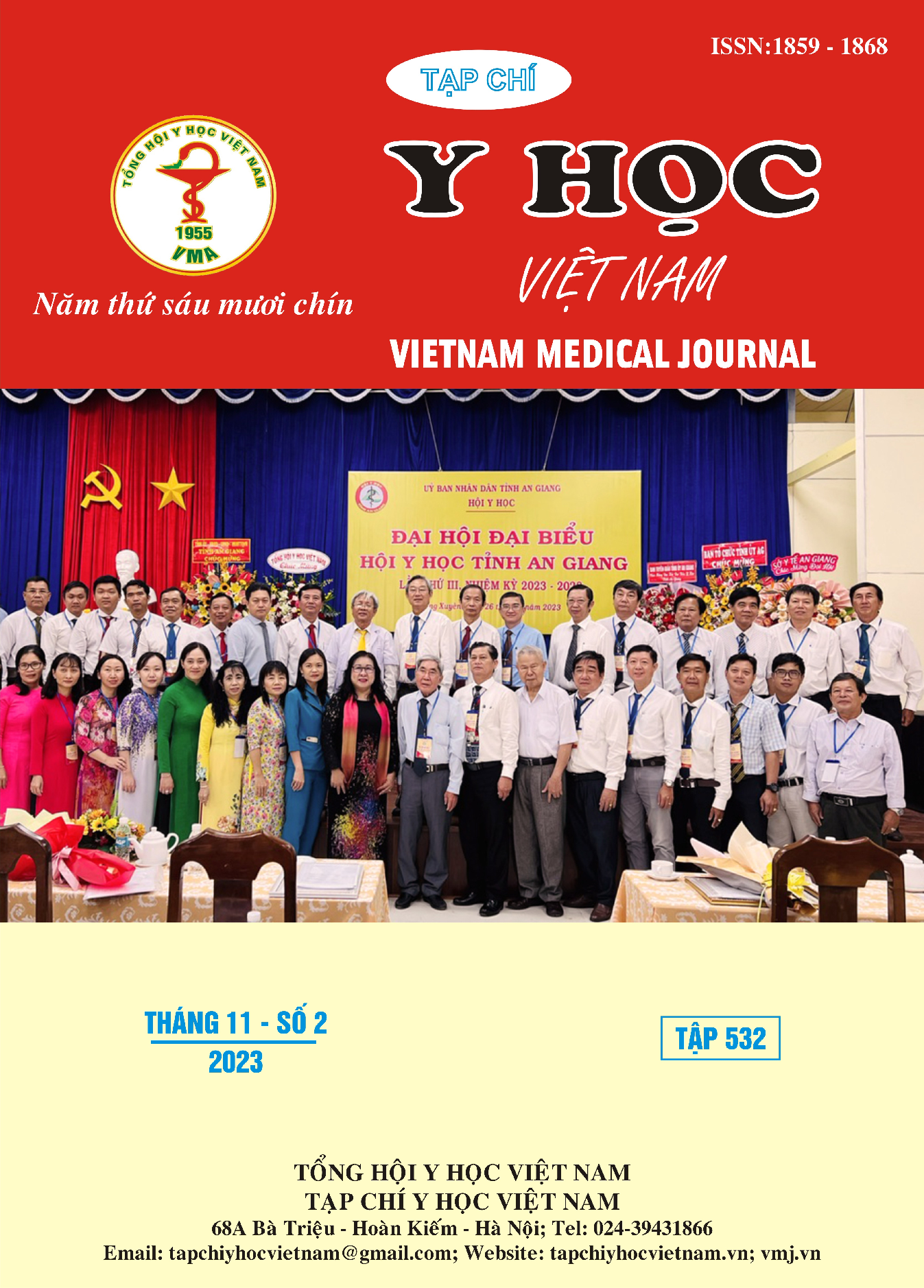COMPARISON OF CHARACTERISTICS OF CULTURE-NEGATIVE PYOGENIC OSTEOMYELITIS AND CULTURE-POSITIVE PYOGENIC OSTEOMYELITIS
Main Article Content
Abstract
Background: Pyogenic vertebral osteomyelitis (PVO) is a relatively common medical condition; however, diagnosing its causative agents remains challenging. In Vietnam, there is a lack of published research on PVO, leading to limited descriptions of its clinical and paraclinical characteristics. Objective: To compare the clinical and paraclinical characteristics, as well as treatment outcomes, between two groups of PVO patients based on bacterial culture results: the positive culture group and the negative culture group. Subjects and Methods: This retrospective descriptive study was conducted on PVO patients meeting the sample selection criteria. Patients were divided into two groups based on bacterial evidence (PVO with positive bacterial culture and PVDI with negative bacterial culture). Collected information included clinical symptoms, biochemical tests, blood and spinal fluid culture results, spinal biopsy results, and computed tomography images from the Picture Archiving and Communication System (PACS). Results: Our study included 42 PVO patients, comprising 15 cases with positive bacterial cultures (35.7%) and 27 cases with negative bacterial cultures (64.3%). The positive culture group exhibited significantly higher CRP levels, white blood cell counts, and abscess formation rates compared to the negative culture group (P<0.05). The recurrence rate of PVO in the positive culture group was 6.67%, while the negative culture group had a recurrence rate of 25.93%, with no statistically significant difference (p=0.222). Conclusion: PVO patients with positive bacterial cultures had a lower recurrence rate compared to the negative culture group. The positive culture group demonstrated higher rates of abscess formation, elevated CRP levels, and increased white blood cell counts than the negative culture group. However, the recurrence rates between the two groups were not statistically significant.
Article Details
Keywords
pyogenic vertebral osteomyelitis, negative bacterial cultures, positive bacterial cultures
References
2. Fantoni M, Trecarichi EM, Rossi B, et al. Epidemiological and clinical features of pyogenic spondylodiscitis. European Review for Medical & Pharmacological Sciences. 2012;16
3. Issa K, Diebo BG, Faloon M, et al. The epidemiology of vertebral osteomyelitis in the United States from 1998 to 2013. Clinical Spine Surgery. 2018;31(2):E102-E108.
4. Russo A, Graziano E, Carnelutti A, et al. Management of vertebral osteomyelitis over an eight-year period: The UDIPROVE (UDIne PROtocol on VErtebral osteomyelitis). International Journal of Infectious Diseases. 2019; 89:116-121.
5. Yu D, Kim SW, Jeon I. Antimicrobial therapy and assessing therapeutic response in culture-
negative pyogenic vertebral osteomyelitis: A retrospective comparative study with culture- positive pyogenic vertebral osteomyelitis. BMC Infectious Diseases. 2020;20:1-8.
6. Kim J, Kim Y-S, Peck KR, et al. Outcome of culture-negative pyogenic vertebral osteomyelitis: comparison with microbiologically confirmed pyogenic vertebral osteomyelitis. Elsevier; 2014: 246-252.
7. Yu D, Kim SW, Jeon I. Antimicrobial therapy
and assessing therapeutic response in culture- negative pyogenic vertebral osteomyelitis: A retrospective comparative study with culture- positive pyogenic vertebral osteomyelitis. BMC Infectious Diseases. 2020;20(1):1-8.
8. McHenry MC, Easley KA, Locker GA. Vertebral osteomyelitis: long-term outcome for 253 patients from 7 Cleveland-area hospitals. Clinical Infectious Diseases. 2002;34(10):1342-1350.


